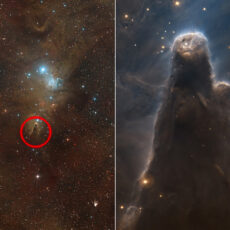
NSF NOIRLab’s Gemini North telescope captured an incredible image of supernova SN 2023ixf caused by the explosion of a massive star in the spiral pinwheel galaxy Messier 101. In the coming months, this telescope will allow astronomers to study how the light from the supernova fades and how its spectrum evolves over time.

This pinwheel galaxy is located around 21 million light-years from Earth in the direction of the constellation Ursa Major. Featuring a face-on orientation to Earth, it boasts a pristine view of its 170,000 light-year diameter and allows observers to marvel at its nearly one trillion stars.
- BRIGHT, SHARP VIEWS ANYWHERE: Unlike many beginner telescopes, this quality refractor features fully coated glass lenses and a 70mm aperture for...
- PERFECT FIRST TELESCOPE FOR BEGINNERS: Designed for adults and kids to enjoy together, this beginner-friendly telescope sets up in minutes and...
- EASY NO-TOOL SETUP: No complicated assembly or tools needed. The full-height tripod and telescope tube set up in seconds and pack neatly into the...
The appearance of SN 2023ixf is rather serendipitous for the Gemini North telescope, which is back to observing with its primary mirror repaired and recoated after suffering damage in late 2022. The damage was limited to a small region outside of the light-collecting area of the mirror. Nevertheless, the repairs were carefully planned and completed to ensure that Gemini North could safely return to normal operations,” said NSF NOIRLab.







